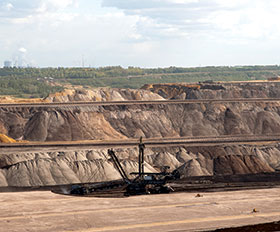

One of the challenges multinational mining companies face is how to consolidate their security efforts in order to monitor multiple sites in different countries from a central point in bandwidth-constrained environments.
The end-to-end SerVision offering provides the solution by bridging the communications infrastructure hurdle that remote locations typically present. With its direct or advanced proxy server option and proprietary compression technology, it enables live video transmission over cellular and other low bandwidth networks, making remote surveillance possible from a central location anywhere in the world via multiple channels, including mobile devices.
This means that you can set up your CCTV infrastructure at various mining sites and offices in, say Ghana, Malawi, Botswana and Tanzania, connect them all directly or using a proxy server and bring the video across the continent into Johannesburg (or any chosen location) through either a GSM network or whatever IP networks are available. You can then distribute the transmitted footage throughout your network and distribute it to as many people as you like, in any location. And this can happen live, while also retaining the ability to record footage for future use.
The infrastructure
A standard CCTV camera may record three to 30 frames per second, requiring up to 1 Megabyte per second (MBps) to feed this video stream to a control room or other location. Compression of a video stream to 4 frames per second (fps) at 8 KBps means you can theoretically stream surveillance from 1000 cameras over a 1 Megabyte (MB) link relatively easily. With the SerVision technology, you can use a cabled, wireless, cellular or satellite link without losing in the quality of the video.
For mobile sites, the MVG400 mobile recorders enable streaming of live footage from four cameras mounted in and around the vehicle over cellular (3G) or wireless connections using compression technology. This enables transmission of video at four frames per second (4fps) at data rates as low as 8 Kilobits per second (Kbps). The UVG400 camera range works equally well for fixed and remote sites.
In addition to the digital video recorder (DVR) and/or streaming solutions, the CCTV infrastructure could include an enterprise-level control centre solution to monitor the footage. SerVision’s DVRs come in sizes ranging from two to 16 channels and the control centre can monitor up to 5000 SerVision Video Gateway units.
The SerVision network video recorder (SNVR) units make ideal management centres for a multi-site, multi-country network. SVBackup, which is part of SNVR, is a configurable client application that automatically connects to SerVision video gateways, such as UVG400 and MVG400, through their IP addresses. It then downloads recorded video from them, and saves the video in files in the file system of the SNVR unit.
Centralised management
Operators stationed in control rooms can use the system to view live and recorded video from multiple sites, geofence, locate and monitor fleets of commercial vehicles via GPS and receive immediate notifications about circumstances that require their attention.
The benefits from a mining security perspective are immense. In terms of mining security, it would improve intruder capture, as well as reducing stock loss, while also keeping the risk for security personnel lower. It can also help the company monitor incidents such as cave-ins, wage strikes or political unrest, enabling the mining management to monitor the situation remotely and react promptly.
As all footage is recorded, the mine can ensure that a security incident such as illegal mining – from capture to hand-over of the intruder – is handled strictly according to company security policy. The security benefits of CCTV in multiple mining sites have already been realised with the implementation of SerVision technology at mining sites in Ghana and Tanzania, where the technology reduced illegal mining incidents by up to 50%.
Footage from sites can also help the company with planning, monitoring and analysis to identify the issues at problem sites and learning from sites that are performing exceptionally well. At a human resource management level, remote monitoring can also help organisations to identify employees who are not adhering to policies and procedures, in real-time, so that corrective action can be taken quickly. It is also possible to monitor when staff arrive and leave, so that time sheets can be verified, along with numerous other applications.
For more information contact Graphic Image Technologies, +27 (0)11 483 0333, [email protected], www.git.co.za
| Tel: | +27 11 483 0333 |
| Email: | [email protected] |
| www: | www.git.co.za |
| Articles: | More information and articles about Graphic Image Technologies |

© Technews Publishing (Pty) Ltd. | All Rights Reserved.